REVIEW: Roland AIRA Compact T-8, J-6 and E-4
Over the summer, Roland introduced us to three little AIRA Compact machines, the T-8, J-6 and E-4. Are they the perfect setup for a techno party, or will they fall flat? Here’s our review.
AIRA Compact took me a bit by surprise. My brain immediately leapt around to the Korg Volcas and then to all the mini synths that Behringer has yet to deliver. This looked like Roland was taking its own-brand classics down into the cut-price synth arena. Could they be useful little production tools or are they just a bunch of toys with which to waste a bit of time?
There are three of these little machines; the T-8 Beat Machine, the J-6 Chord Synth and the E-4 Voice Tweaker. They’re all available individually and have their own stories to tell, but Roland is marketing them as interconnected and complimentary. And for good reason, because these three little boxes can be your whole show.

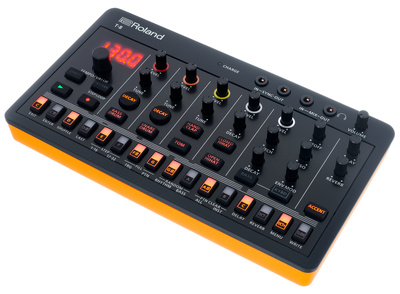

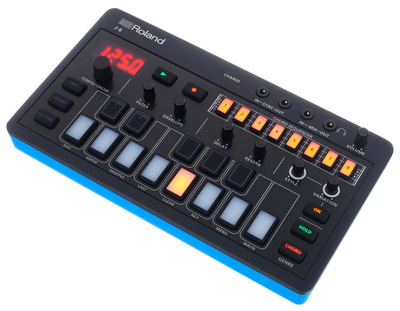

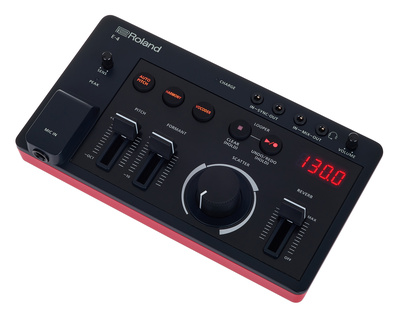
AIRA Compact First Impressions
These are cool little boxes. They are surprisingly small, a shade smaller than Volcas, with which they will get no end of comparisons. The brightly coloured bottoms give them a fun vibe, and you have three stages of chunkiness. The T-8 feels the smallest with those tiny buttons and two rows of annoyingly weeny knobs. The J-6 has a fatter feel with the larger keyboard buttons and more free space. The E-4 has almost oversized faders, a big old knob and a chunky raised input for the microphone – what’s up with that?
All three are so damn adorable and look very neat on your desk. But the best bit is that you can take them out of the box, turn them on, and they work. There’s no power supply, there’s no fiddly battery compartment or having to pop down to the corner shop to pick up some double-As. They have fixed, internal, rechargeable batteries that are already charged and good to go.
The T-8 is a smile-inducing electro box. It’s familiar, you already know what you need to do, and it feels like a complete Roland experience with which you could lose some serious time. The J-6 sounds like it’s rustling up the intro chords to some big banger that’s going to drop in as soon as you wire the T-8 into the mix. The E-4, on the other hand, sits and stares at you as you wonder where you’re going to find a mic cable with a TRS jack on the end.
The one thing that’s missing is any connection cables. All three boxes have Sync in/out, MIDI in/out and Mix in/out on minijack TRS cables, and they are begging to be daisy chained. Would it be too much to ask to have at least one stereo minijack cable in each box? That way, you could have instant MIDI sync and mix through between the T-8 and J-6 which is what you need for your perfect techno jam.
But as first impressions go, I’m having a lovely time.
Let’s take a look at each AIRA Compact in turn and see what they offer.
T-8 Beat Machine
The T-8 is the peach of this little series of boxes. It combines 808 and 303 energy in an infectiously fun-loving little groove box. It’s not all 808 either it comes with a mixture of sounds from the TR-808, 909 and 606 drum machines. I’d like to say that it has kits of each and many variations, but there’s just the one kit of 6 sounds with a variation on the Tom and Clap spread over 4 channels. It’s a sort of greatest hit kit made from those classic drum machines authentically reproduced by Roland’s ACB modelling technology. No samples, no additional kits, it is what it is, and it is good.
To the right of the drums is a little bass synth and this is all TB-303 with exactly the same controls as you get on the original Bassline. It is a simple saw or square wave sweet spot of a synth with a filter that wants to be fiddled with.
You have 32 steps to play with in a pattern. With the four percussion tracks, you can scatter hits on the 16 teeny-weeny buttons by turning them on or off or by playing on the channel button. A Shift-button press takes you to steps 17-32. It’s a very traditional, dead easy 808-style affair. With the bass you can turn notes on and off and then hold it to select the pitch from the knob and display combo. Or you can swap into keyboard mode and try playing something in live. It rarely captures what you were aiming for, but you inevitably come up with something worth fiddling with.
For the kick and snare you get tuning and decay controls, although they don’t do a whole lot. If you push the decay on the snare you seem to lose the front end, which is a shame. On the combined Clap/Tom track, you just get some Tuning, and for the hi-hats, it’s Decay. You can swap out to a different Clap and a high Tom if you dig into the settings. There are quite a few things hidden away in the settings that would be better placed on the front panel, but then there’s just not the room.
There are some cool performance controls like the Step Loop, which ratchets whatever percussion is firing on the step that you press. You can also Mute each channel and rotate patterns for some variation. You can drop in fills, randomise the percussion or the bass line, and you’ve got some rather nice Delay and Reverb right on the front panel. One surprise is the existence of side chain compression that lets that kick through rather smartly.
As you get into the T-8, you do tend to come up against limitations. You’ll find a lot of extra detail in the menu like gain, panning and the waveform switch, but it tends to be fiddly to access. The buttons and knobs can be really difficult to see when they’re not lit, the keyboard mode is not great, and you can’t audition the drum sounds when tweaking. However, you are usually having far too much fun to really notice. The T-8 is an absolute joy to make rhythms and basslines on.


J-6
The J-6 is a chord machine that pulls sounds from the JUNO-60. It sounds completely brilliant, and I confess to being a bit gob-smacked at the sounds and chord progressions that this thing pumps out. They are instant crowd pleasers, and you can’t help but lean into that filter and feel the build.
It’s easy to think that the J-6 is more than what it is. It initially gives you the goosebumps of a real synth, but you soon discover that it’s something else. But where you’ve lost that sense of full control, you’ve gained a smorgasbord of chord sets, rhythms and variations that drop nicely into the pocket of all sorts of music. My brain would get confused between feeling let down by the lack of synthiness while being energised by the awesomeness of what it’s doing.
So what do you get in this odd little box? There are 64 presets derived from the JUNO-60 that use the same ACB engine as the Boutique JU-06a, and it sounds fabulous. There are 100 sets of chords that compliment and vibe with each other. For rhythms and arpeggios you’ll find 9 different styles with 12 variations. And then there are 64 steps in which to sequence your progressions. And it’s so easy to use.
The basic idea is that you find a sound you like, dial in a style and variation depending on how rhythmic, paddy, stabby or arpeggiated you want it and then find a selection of chords that speaks to you. The chords are scattered across the mini keyboard for you to play with – this has nothing to do with playing any chords yourself; you’re just triggering preset chords with one finger. Then you use the Chord Sequencer to store whatever 8 chords you’d like in your progression. Set it running, play with the filter, envelope and effects, and it’s quite heavenly.
If you want to come up with your own chords, then that’s what the keyboard is for. Or you can plug in a MIDI keyboard to make better use of those 4-voices. It’s a decent box just for the sounds.
Of course, it’s not a real synth or a particularly intelligent sequencer. There’s no automation or motion sequencing. You can’t even address the filter over MIDI, so you can’t control or automate the parameters from your DAW. Although it will output MIDI so you can send the chords to other synths, so that’s something. You want to call it a 4-voice polysynth, but you can’t really get away with it. However, it’s brilliant at what it does.


E-4
This is the odder one of the bunch. But it’s certainly something that’s going to interest a lot of vocal performers. It’s essentially a cut-down version of the Roland VT-4 Voice Transformer and is designed to do fun and helpful things to your voice.
The first thing to know is that you don’t have to have a proper mic to plug in the chunky input. You can use a phone-style mic and headphone combo in the Mix output, and it routes the mic straight in. That’s quite brilliant.
The idea is that you can change the pitch and formant of your voice to make yourself sound weird, turn yourself into a vocoding robot or perhaps more helpfully add some autotune and harmonies to your singing. There’s a big Reverb slider to drown yourself and an intriguing Scatter knob to slice yourself. As I say, it’s an odd box.
However, the E-4 works brilliantly as a way to add effects and flesh out a vocal performance. The fact that it’s included in this series shows that Roland is thinking about more than simply banging out techno tracks. The harmony and pitch tuning in here are excellent. You have a wide choice of scales and chords to pick from, and they sound great. It has a simple Looper function so you can capture something and then overdub or sing over the top.
The Scatter function is a big knob of stutter and beat-repeat effects that ties directly into the tempo. So if you have this wired in sync with the other boxes, the repeats will always drop on the beat.
While the facilities on the E-4 are great, I feel Roland could have gone a little further. It would have been nice to mix in the output of the T-8 and J-6 to the Scatter effect. It could have been a little mixer for the other boxes. Maybe with some playful mute/solo buttons? That would have really rounded out this series.


Using them together
Connecting all three together gives you the makings of a fantastic techno party. You tend to find you put the T-8 at the top of the chain with the J-6 following and the E-4 at the end. You can use Sync to keep them all in time. But if you want the T-8 and J-6 to start and stop together, then MIDI is the way to go. Each box has a handy Mix input so you can daisy chain each one to the next. All you have to do is adjust the level on each box to balance things.
Hit play on the T-8, and it all goes off! You can have hours of fun crafting rhythms and tunes on the T-8 and J-6. Then, when you’re feeling courageous enough, you can grab the mic and bring in the E-4.
One slight snag is the difference between the quick 32 steps on the T-8 and the very long 64 steps on the J-6. You can only really fit one bassline into 32 steps, and it can last as long as just a single chord on the J-6. It would be nice for the bassline to follow the chord changes. There is a way to transpose on the T-8, but it’s on a knob, so you step through each semi-tone. It would be far better if you could use the Keyboard mode to transpose so you could keep up with the J-6 chord changes. An alternative way of doing it would be with some pattern chaining. Then you could wire together 8 patterns to follow the chords, but unfortunately, that’s not a feature.
Grumbles aside, it is so much fun to play with these together.
Conclusions
The AIRA Compact series is impossible to dislike. While there are loads of limitations, they never pretend to be anything other than what they are. Roland has crafted together a sweet spot of sounds, features and musicality. Anyone, regardless of musical ability, could get a lot of fun out of them. Even seasoned pros could enjoy messing about on the T-8 on their commute, and you could easily wire it into your phone to do more with it.
The biggest disappointment for me is the lack of MIDI control, automation and modulation. Everything has to be hands-on, all at once; you can’t modulate or automate any parameters. While that definitely keeps you occupied in the performance, I can’t help thinking Roland has hobbled these a little bit so that they’re not too good.
However, these are fabulous at what they do, they are perfectly pitched and featured and make for a fantastic little electronic music setup.






5 responses to “REVIEW: Roland AIRA Compact T-8, J-6 and E-4”

You are currently viewing a placeholder content from Facebook. To access the actual content, click the button below. Please note that doing so will share data with third-party providers.
More InformationYou are currently viewing a placeholder content from Instagram. To access the actual content, click the button below. Please note that doing so will share data with third-party providers.
More InformationYou are currently viewing a placeholder content from X. To access the actual content, click the button below. Please note that doing so will share data with third-party providers.
More Information
 3,6 / 5,0 |
3,6 / 5,0 | 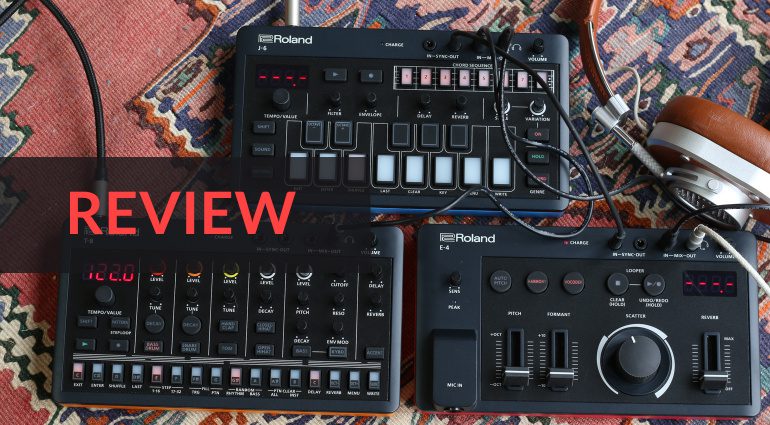


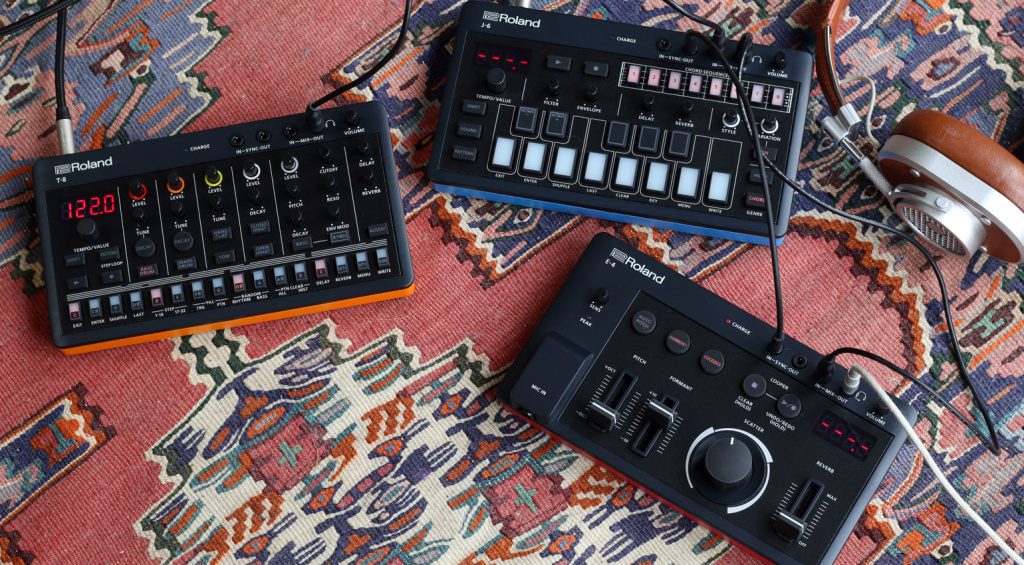

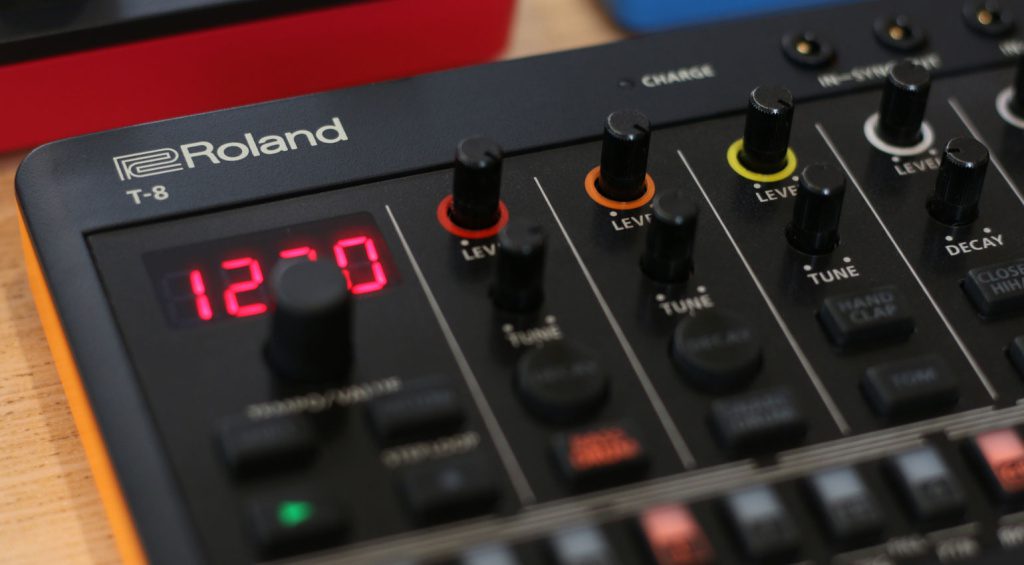
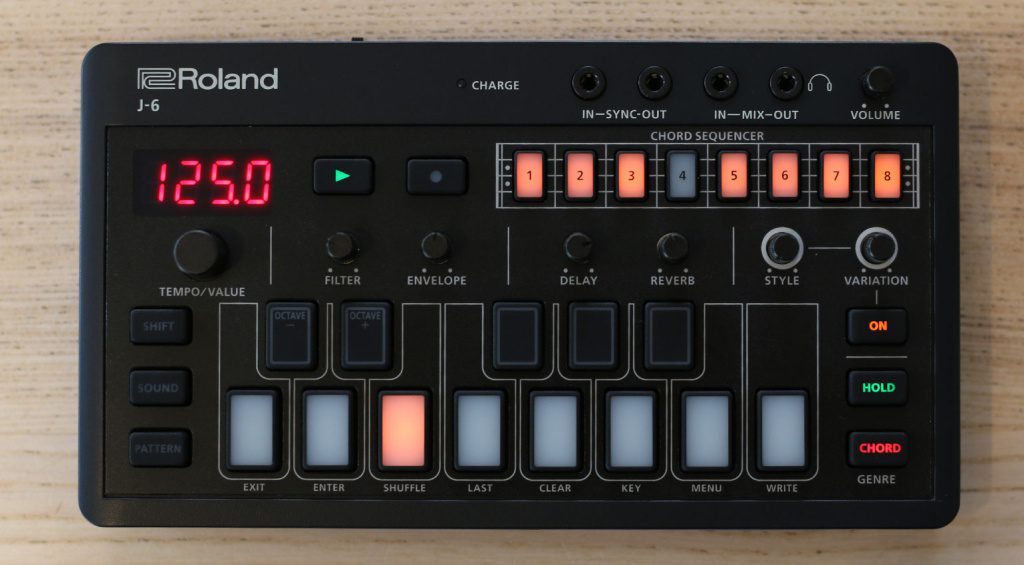


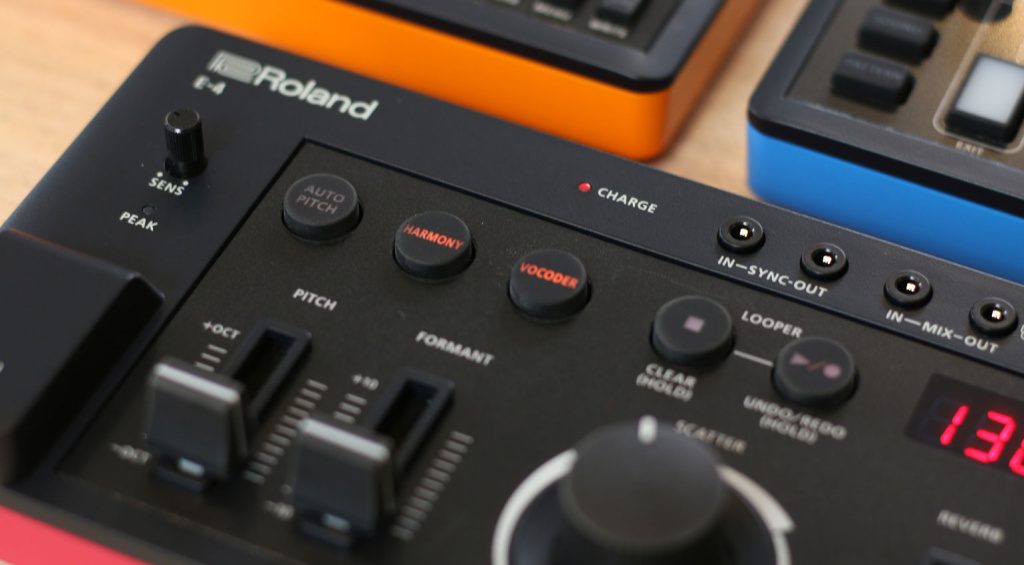




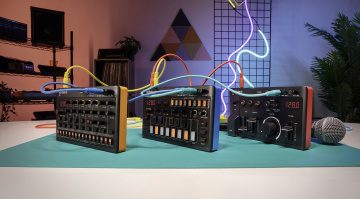

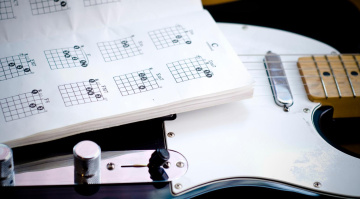
The J-6 acts as a midi and audio interface and works perfectly with an iPhone/iPad for a very powerful little setup.
Will Roland ever innovate again?! They keep recycling the same products over and over again. Boring…
Dive into their Zen synthesis and you will find real innovation and endless possilities under the hood!
How do you do that then? I’m not aware of them having any connection to ZenCore. There’s no MIDI implementation outside of notes and pattern changes so how are you going to access the synthesis under the hood? I’m definitely interested if you can!
Great article! Not sure why someone would have ‘one-starred’ it 🤷♂️
If only it weren’t for these pesky energy cost increases. Once upon a time, not too long ago, I’d have snapped the T-8 and J-6 up on launch day. Not any more….